Related Research Articles
The Carl-Gustaf Rossby Research Medal is the highest award for atmospheric science of the American Meteorological Society. It is presented to individual scientists, who receive a medal. Named in honor of meteorology and oceanography pioneer Carl-Gustaf Rossby, who was also its second (1953) recipient.
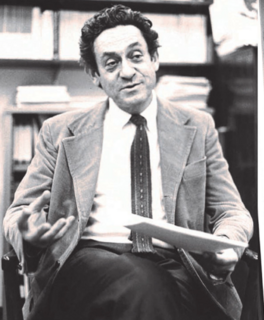
Jule Gregory Charney was an American meteorologist who played an important role in developing numerical weather prediction and increasing understanding of the general circulation of the atmosphere by devising a series of increasingly sophisticated mathematical models of the atmosphere. His work was the driving force behind many national and international weather initiatives and programs.
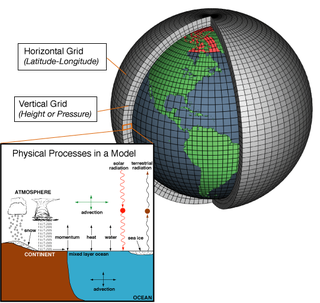
Numerical weather prediction (NWP) uses mathematical models of the atmosphere and oceans to predict the weather based on current weather conditions. Though first attempted in the 1920s, it was not until the advent of computer simulation in the 1950s that numerical weather predictions produced realistic results. A number of global and regional forecast models are run in different countries worldwide, using current weather observations relayed from radiosondes, weather satellites and other observing systems as inputs.
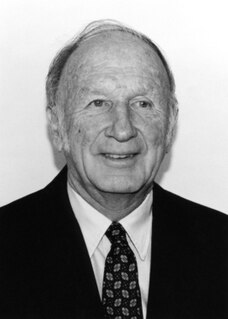
Edward Norton Lorenz was an American mathematician and meteorologist who established the theoretical basis of weather and climate predictability, as well as the basis for computer-aided atmospheric physics and meteorology. He is best known as the founder of modern chaos theory, a branch of mathematics focusing on the behavior of dynamical systems that are highly sensitive to initial conditions.

Joseph Smagorinsky was an American meteorologist and the first director of the National Oceanic and Atmospheric Administration (NOAA)'s Geophysical Fluid Dynamics Laboratory (GFDL).
Atmospheric thermodynamics is the study of heat-to-work transformations that take place in the earth's atmosphere and manifest as weather or climate. Atmospheric thermodynamics use the laws of classical thermodynamics, to describe and explain such phenomena as the properties of moist air, the formation of clouds, atmospheric convection, boundary layer meteorology, and vertical instabilities in the atmosphere. Atmospheric thermodynamic diagrams are used as tools in the forecasting of storm development. Atmospheric thermodynamics forms a basis for cloud microphysics and convection parameterizations used in numerical weather models and is used in many climate considerations, including convective-equilibrium climate models.

An atmospheric model is a mathematical model constructed around the full set of primitive dynamical equations which govern atmospheric motions. It can supplement these equations with parameterizations for turbulent diffusion, radiation, moist processes, heat exchange, soil, vegetation, surface water, the kinematic effects of terrain, and convection. Most atmospheric models are numerical, i.e. they discretize equations of motion. They can predict microscale phenomena such as tornadoes and boundary layer eddies, sub-microscale turbulent flow over buildings, as well as synoptic and global flows. The horizontal domain of a model is either global, covering the entire Earth, or regional (limited-area), covering only part of the Earth. The different types of models run are thermotropic, barotropic, hydrostatic, and nonhydrostatic. Some of the model types make assumptions about the atmosphere which lengthens the time steps used and increases computational speed.
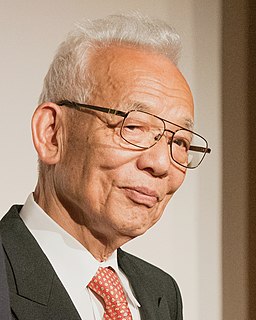
Syukuro "Suki" Manabe is a Japanese-educated American meteorologist and climatologist who pioneered the use of computers to simulate global climate change and natural climate variations. He was awarded the 2021 Nobel Prize in Physics jointly with Klaus Hasselmann and Giorgio Parisi, for his contributions to the physical modeling of earth's climate, quantifying its variability, and predictions of climate change.
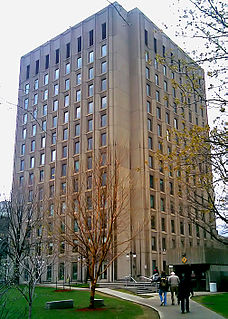
The Department of Atmospheric and Oceanic Sciences of McGill University is the largest university atmospheric-oceanic sciences group in Canada. In 2012, it has 11 Faculty and 6 Associate Faculty members, 5 support staff, 14 research associates and postdoctoral fellows, and 31 graduate students. It is known worldwide, in particular for weather radar research and Arctic studies. It has operated the second oldest weather observatory in Canada since 1862.
Kirk Bryan Jr. (born 1929, son of Kirk Bryan, Sr. is an American oceanographer who is considered to be the founder of numerical ocean modeling. Starting in the 1960s at the Geophysical Fluid Dynamics Laboratory, then located in Washington, D.C., Bryan worked with a series of colleagues to develop numerical schemes for solving the equations of motion describing flow on a sphere. His work on these schemes led to the so-called "Bryan-Cox code" with which many early simulations were made, and which led to the Modular Ocean Model currently used by many numerical oceanographers and climate scientists.

Dr. André Robert was a Canadian meteorologist who pioneered the modelling the Earth's atmospheric circulation.

Jagadish Shukla is an Indian meteorologist and Distinguished University Professor at George Mason University in the United States.
Sverdrup Gold Medal Award – is the American Meteorological Society's award granted to researchers who make outstanding contributions to the scientific knowledge of interactions between the oceans and the atmosphere.
Adrian Edmund Gill FRS was an Australian meteorologist and oceanographer best known for his textbook Atmosphere-Ocean Dynamics. Gill was born in Melbourne Australia and worked at Cambridge, serving as Senior Research Fellow from 1963 to 1984. His father was Edmund Gill, geologist, palaeontologist and curator at the National Museum of Victoria.

Isaac Meyer Held is an American meteorologist. He is a senior research scientist at the Geophysical Fluid Dynamics Laboratory. Held was elected to the United States National Academy of Sciences in 2003.
The Jule G. Charney Award is the American Meteorological Society's award granted to "individuals in recognition of highly significant research or development achievement in the atmospheric or hydrologic sciences". The prize was originally known as the Second Half Century Award, and first awarded to mark to fiftieth anniversary of the society.
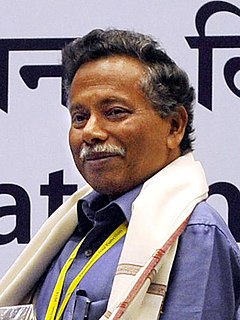
Bhupendra Nath Goswami is an Indian meteorologist, climatologist, a former director of the Indian Institute of Tropical Meteorology (IITM). and a Pisharoty Chair Professor at the Indian Institute of Science Education and Research. He is known for his researches on the Indian monsoon dynamics and is an elected fellow of all the three major Indian science academies viz. Indian National Science Academy, Indian Academy of Sciences, and the National Academy of Sciences, India as well as The World Academy of Sciences. The Council of Scientific and Industrial Research, the apex agency of the Government of India for scientific research, awarded him the Shanti Swarup Bhatnagar Prize for Science and Technology, one of the highest Indian science awards for his contributions to Earth, Atmosphere, Ocean and Planetary Sciences in 1995.

Peter John Webster is a meteorologist and climate dynamicist relating to the dynamics of large-scale coupled ocean-atmosphere systems of the tropics, notably the Asian monsoon. Webster holds degrees in applied physics, mathematics and meteorology. Webster studies the basic dynamics of the coupled ocean-atmosphere system in the tropics and has applied this basic knowledge to developing warning systems for extreme weather events in Asia. He has served on a number of prestigious national and international committees including the World Climate Research Program's Joint Scientific Committee (1983-1987), chaired the international Tropical Ocean Global Atmospheric (TOGA) organizing committee (1988–94) and was co-organizer of the multinational TOGA Couple Ocean-Atmosphere (1993). He is Emeritus Professor in Earth and Atmospheric Sciences at Georgia Institute of Technology and co-founder and Chief Scientist of Climate Forecast Applications Network LLC, a weather and climate services company.
Peter George Baines is an Australian geophysicist. He is an Honorary Senior Fellow at University of Melbourne and Honorary Secretary at Royal Society of Victoria.
References
- ↑ "John Marshall" . Retrieved 10 October 2015.
- ↑ "L F Richardson Prize". Royal Meteorological Society. Retrieved 20 May 2015.
- ↑ "Adrian Gill Prize". Royal Meteorological Society. Retrieved 20 May 2015.
- ↑ "Fellows". Royal Society. Retrieved 20 May 2015.
- ↑ "AMS Awards Search". American Meteorological Society. Retrieved 20 May 2015.